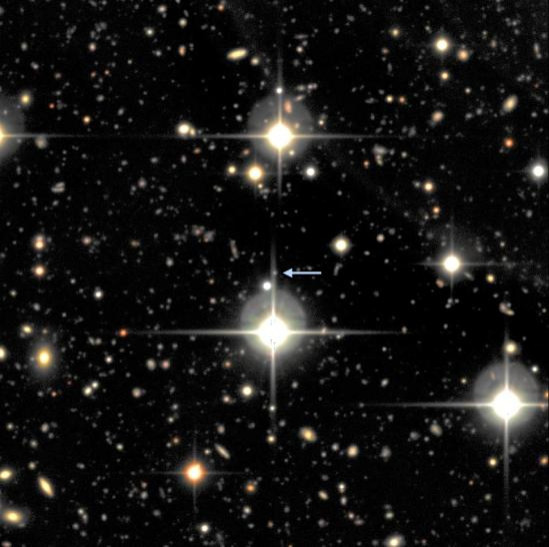Two New Supernovae Discovered, Stellar Explosions Formed ‘Before The Sun Even Existed’ [PHOTO]

Two supernovae discovered a few years ago are now considered two of the brightest ever recorded.
The supernovae, which are 10 billion light-years away and were recorded by astronomers affiliated with the Supernova Legacy Survey (SNLS), are 100 times more luminous than an average supernova, leaving scientists to wonder how the two steller explosions can emit so much light.
"At first, we had no idea what these things were, even whether they were supernovae or whether they were in our galaxy or a distant one," lead author D. Andrew Howell, a staff scientist at Las Cumbres Observatory Global Telescope Network (LCOGT), said in a press release. "I showed the observations at a conference, and everyone was baffled. Nobody guessed they were distant supernovae because it would have made the energies mind-bogglingly large. We thought it was impossible."
The findings, published in the Astrophysical Journal, describe how the supernovae were most likely a creation from a magnetar, a neutron star that has an exceptionally powerful magnetic field. One of the supernovae, named SNLS-06D4eu, may be the brightest and most distant star ever found, belonging to a class called superluminous supernovae.
Astronomers came to their conclusions using models of the supernovae. Co-authors Daniel Kasen and Lawrence Berkeley found that the star was initially much larger and later shed its outer layers before exploding and leaving a smaller, naked core.
"What may have made this star special was an extremely rapid rotation," Kasen said. "When it ultimately died, the collapsing core could have spun up a magnetar like a giant top. That enormous spin energy would then be unleashed in a magnetic fury."
The two supernovae discoveries, in 2006 and 2007, were part of a five-year effort to study thousands of supernovae observed at the Canada-France-Hawaii Telescope, the Very Large Telescope (VLT) and the Gemini and Keck telescopes. At first, the two new supernovae could not be identified or located. It was only after theoretical work could astronomers explain their findings.
The age alone of the two new supernovae is hard to grasp. Formed when the universe was 4 billion years old, they were born “before the sun even existed," Howell said. "There was another star here that died and whose gas cloud formed the sun and Earth. Life evolved, the dinosaurs evolved and humans evolved and invented telescopes, which we were lucky to be pointing in the right place when the photons hit Earth after their 10-billion-year journey."
© Copyright IBTimes 2024. All rights reserved.






















